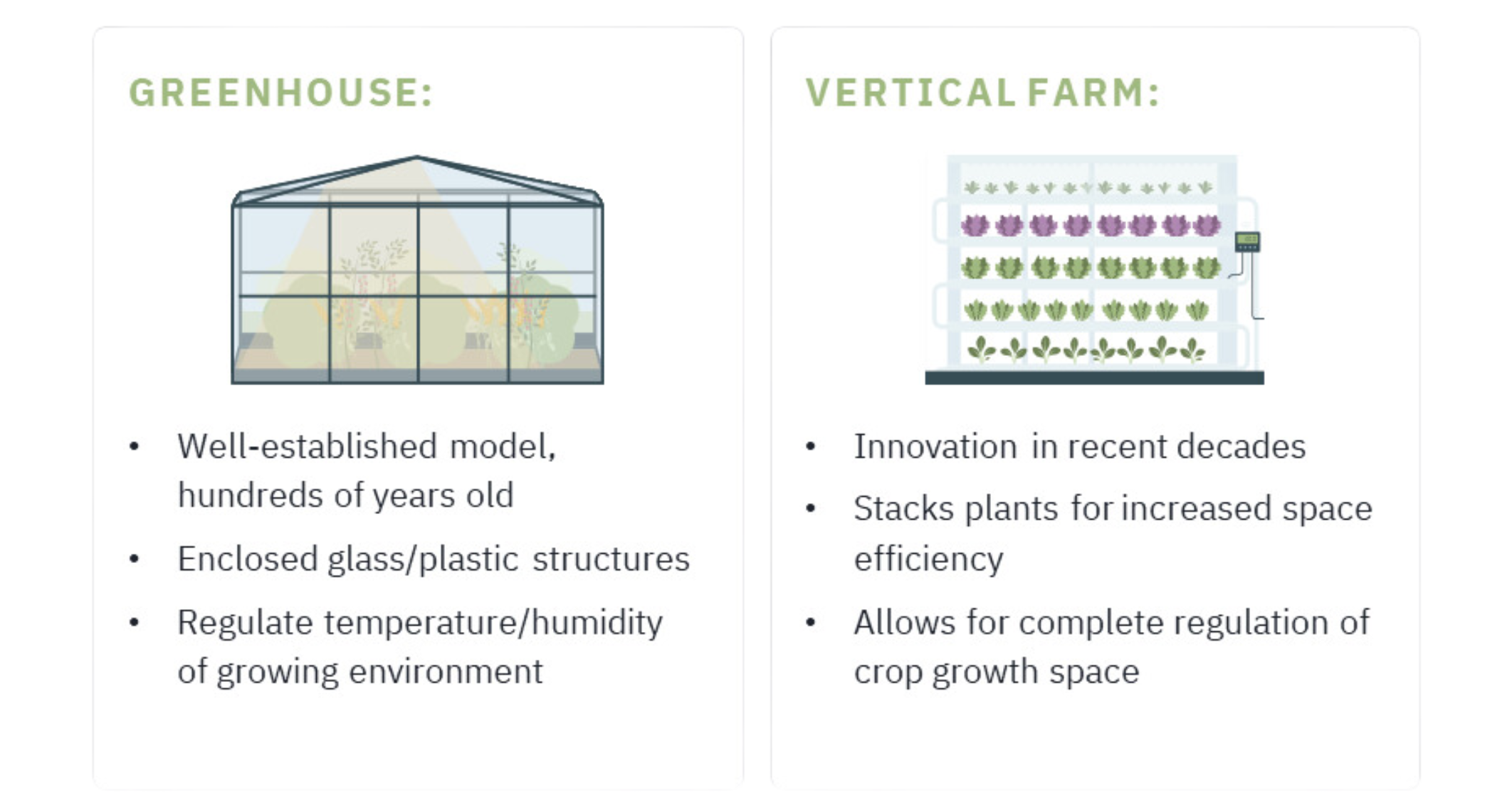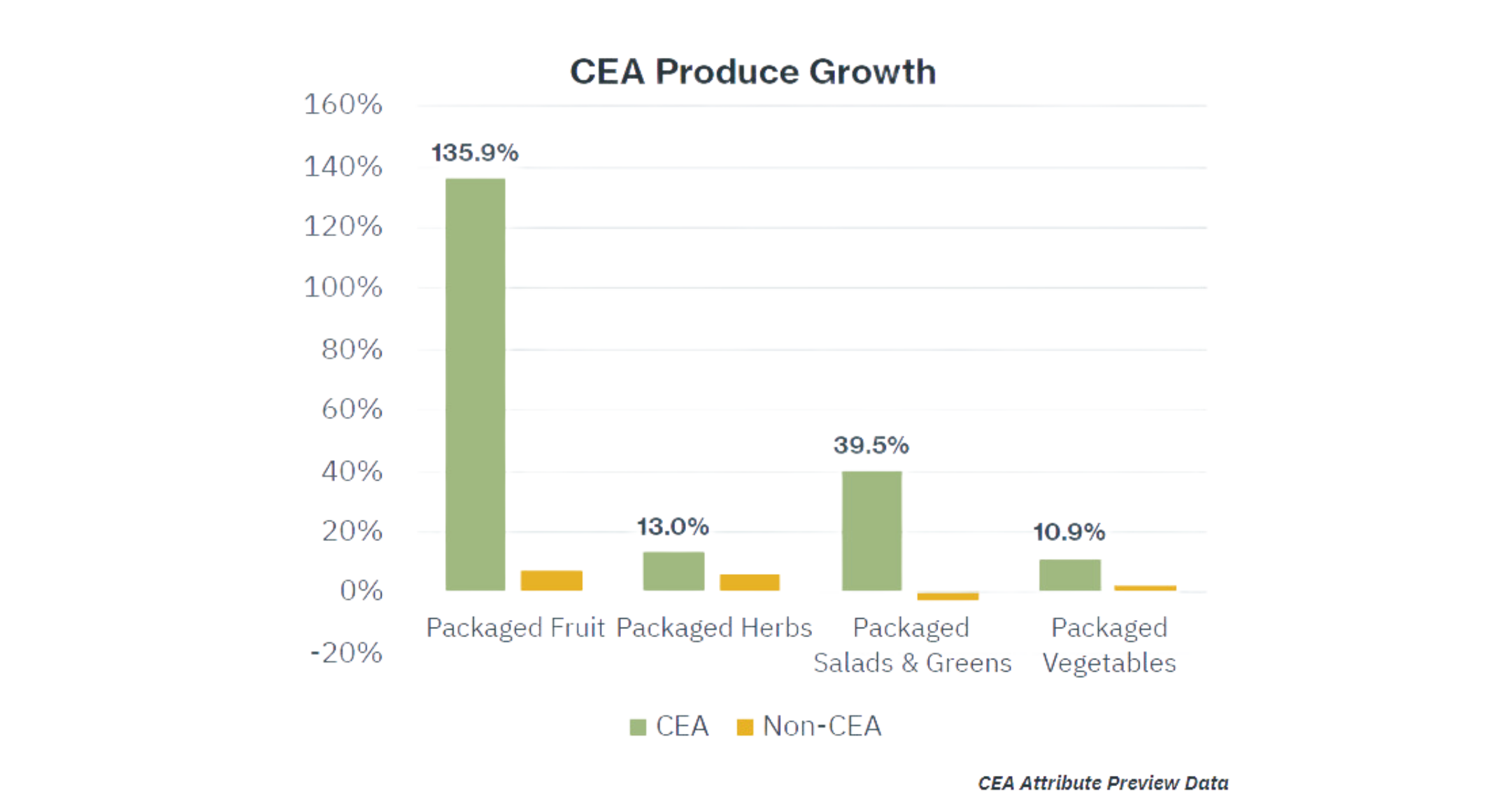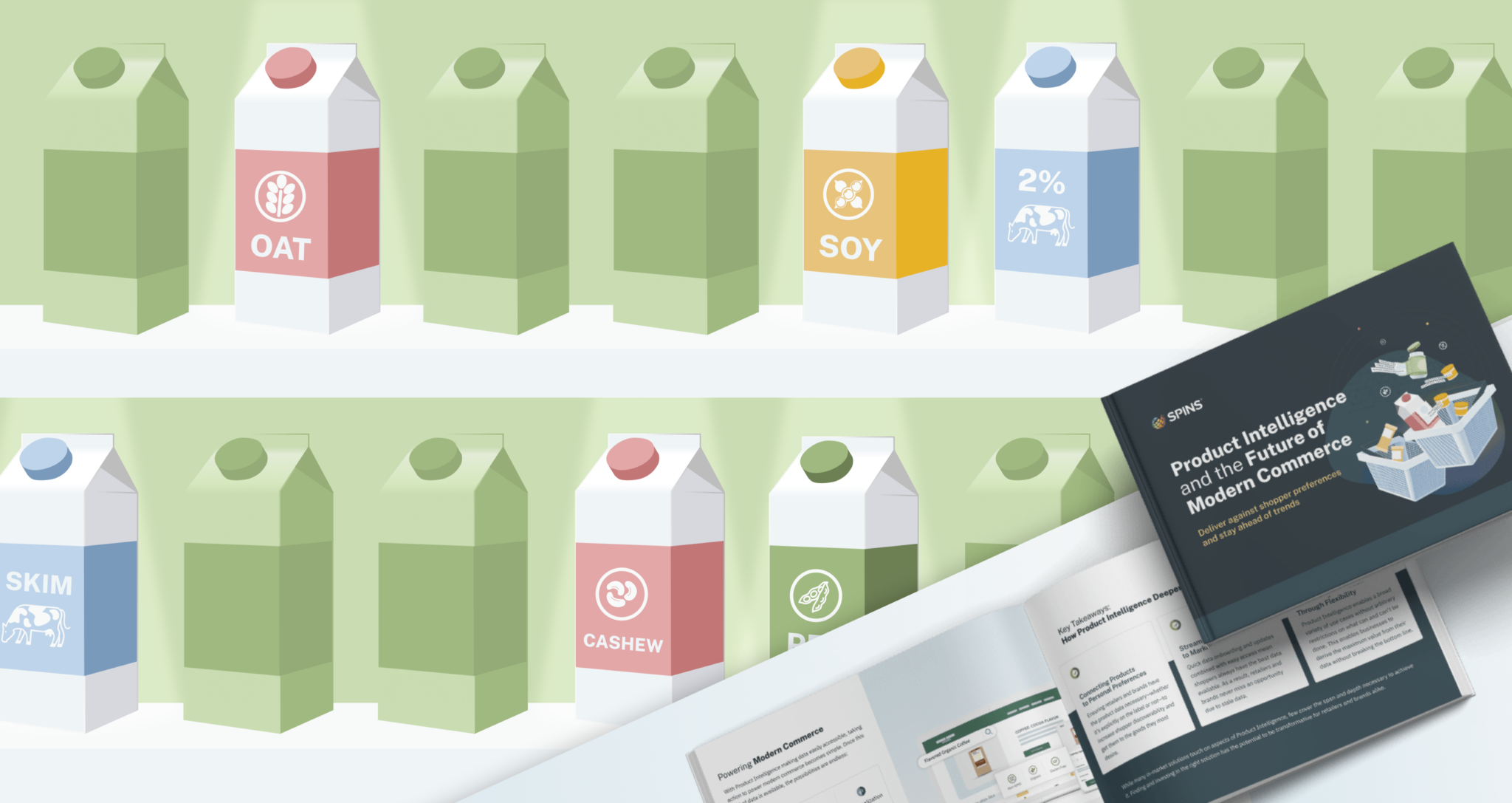Key Takeaways:
- Controlled Environment Agriculture (CEA) allows for optimized crop growth in controlled conditions for higher yields and lower environmental impacts
- The most well-known form of CEA is the greenhouse, but vertical farms are another form rapidly growing in adoption
- CEA products make up ~$1.8B in sales and are growing over 5x faster than non-CEA products
[PDF] SPINS Product Intelligence Attribute Spotlight: Controlled Environment Agriculture
DownloadWhat is it?
Controlled Environment Agriculture (CEA) is a method of agriculture that enables fine-tuned optimization of crop growth conditions, starting with the space they’re grown in, hence, a controlled environment. The most well-known form of CEA is greenhouses, which, alongside other methods, allow resources to be closely measured and optimized to produce the highest yield, resulting in greater efficiency. CEA uses less land, water, fertilizer, and pesticides than conventional field agriculture, and is a key step towards a more sustainable food system.
Types of CEA
CEA covers several types of systems that use technology to optimize and control growing conditions. The fastest-growing forms of commercial CEA are greenhouses and vertical farms. Both methods allow crops to be grown year-round.
Greenhouses are an older and well-established CEA method. They are enclosed structures made of glass or plastic, designed to regulate and control the temperature and humidity of the growing environment. Although many plants can be grown indoors, peppers, lettuce, microgreens, strawberries, and tomatoes are commonly grown in greenhouses due to how well they grow in higher temperatures.
The most technologically advanced method of CEA is the vertical farm, also referred to as an indoor or urban farm. Vertical farming involves stacking plants vertically and using LED lights to maximize growth. Vertical farms use drastically less land than conventional field agriculture and can be built in dense urban areas.
Although soil can be used, this type of farming often also uses hydroponics, aquaponics, or aeroponics to grow plants by submerging or misting roots directly with nutrient-rich water, removing the need for soil. Vertical farms typically utilize advanced technology and data sensors to precisely monitor nutrient, water, and light inputs to maximize yield and optimize crops for better quality, taste, and nutrition.

Most common commercial models: Greenhouse and Vertical Farm
Why CEA Matters
CEA provides several sustainability advantages. CEA produce has a much lower environmental footprint than produce grown outdoors—depending on the method, CEA can use as little as 99% less land and 98% less water than conventional agriculture.
Since crops are protected from outside risks, they can be grown without any pesticides, herbicides, or fungicides and still avoid loss from pests or disease. In a controlled environment, food can be produced year-round in any season, making CEA a resilient and stable source of fresh food, with no need for climate change adaptations, e.g., drought resistance.
Indoor farms can be built almost anywhere, such as shipping containers or office buildings, and don’t have to be transported long distances to the end consumer. This creates greater access to locally supplied, fresher produce with longer shelf-lives than conventionally grown produce. The result: lower transportation costs and emissions and reduced food waste.
Growth of CEA
CEA is proving to be a disruptive and innovative force in several Produce subcategories, far outpacing non-CEA dollar growth and commanding a rapidly growing percentage of the overall market. According to a USDA report, the number of CEA operations more than doubled between 2009 and 2019.
This trend is most noticeable in the Packaged Fruit subcategory, but several other categories are showing similar explosive growth.

Source: SPINS Natural & MULO Combined Channels, Last 52 Weeks Ending 04/21/2024 (Produce Department); CEA Attribute Preview)
SPINS data shows sales volume of CEA products represents approximately 4% of the produce market, totaling approximately $1.8B in sales for the last 52 weeks ending 04/21/2024. Overall, the growth of CEA sales is over 5x faster than non-CEA sales volume growth—17% compared to 3%!
With so many benefits to consumers, it’s no wonder that CEA is experiencing rapid growth as new and established CEA brands are gaining popularity and market share.
Conclusion
CEA’s optimized yields combined with the rising consumer appetite for sustainable products driven by the Values-Oriented Shopper are setting the stage for increasing adoption of this high-efficiency growth methodology. As the techniques grow increasingly refined and businesses continue to scale, we look forward to receiving fresher, more nutritious produce grown closer to home.







